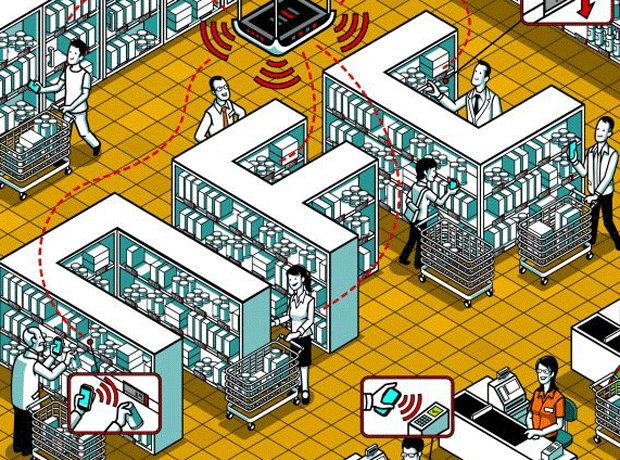
If you’re a futuristic Fagin, any new technology that helps you pick a pocket or two probably sounds like a wonderful thing. If you’re an M&S customer whose pocket got picked because the same technology just went haywire, you’re probably less impressed. And if you only started reading about the technology in question - Near Field Communication (NFC) - when M&S customers began complaining of being charged twice last month, you’re probably wondering why NFC is being touted as the next big thing.
Add to this lurid tales of a new breed of pickpocket able to insidiously scan bank details from people nearby without moving a muscle, the fact apple has yet to add NFC to its iPhones and the likes of Tesco declaring NFC is “not cool enough”, and it just lends weight to the critics who suggest NFC actually stands for ‘nobody f**king cares’.
OK, that may be overly harsh. ABI Research predicts that 85% of new PoS will be NFC-enabled within three years, while technology company Gartner believes global mobile payments will total £460bn by 2017. The latter also predicts that 450 million shoppers will be electing to pay by mobile by then.
But although some retailers are dipping their toes in the water, there remains a huge amount of controversy, confusion and tabloid bluster surrounding the take-up of NFC. So are concerns over payment security legitimate? Will the retailers currently steering clear while such ‘glitches’ are addressed eventually dive in? Or is the prospect of Near Field Communication rather further away than people think?
The big selling point of NFC is that it allows information to be shared wirelessly between payment cards or mobile phones and tills. Think of it as a souped-up version of Bluetooth. Customers just tap or wave their NFC-enabled smartphones or NFC debit cards on or over the NFC-enabled till to pay. Simple.
In theory, anyway. As a handful of M&S customers discovered to their cost last month, it’s not always quite as smooth a process as it should be. Nine days after M&S revealed it was taking a record 230,000 contactless payments (around one in 20) every week, customers started complaining about being charged twice for their lunch. They claimed that despite paying by chip & PIN, the M&S checkout had picked up a signal from a separate contactless debit card in their bag or wallet and decided to charge that one too.
Game on?
When it comes to adopting NFC in stores, the majority of the major multiples in the UK appear happy to dip a toe in the water, but are yet to fully take the plunge. Here’s The Grocer’s inside track on which retailers are likely to roll it out:
Waitrose 3/5
Waitrose loves contactless payments, by card or smartphone. It offers the service in 19 stores, and says its “shoppers expect us to have the latest technology available. Take-up so far has been good, and we will be rolling NFC out to all of our branches later this year.”
Morrisons 2.5/5
Morrisons doesn’t offer contactless payments in any stores, but is the only one to have used NFC in advertising, employing NFC-tagged bus shelters and posters in Reading to deliver special offers to smartphone users who tapped on the ads.
Asda 2/5
Asda launched a trial of contactless payments in 25 stores in July 2012. It’s still only available in 25 stores. Asda recently announced plans to trial a Scan & Go app in Q4 2013, but shoppers will scan barcodes with their cameras, rather than NFC.
Tesco 1/5
Tesco is trialling contactless payment in 34 stores. However, Tesco recently dismissed NFC as not “cool” enough. And although it is pioneering UK adoption of virtual shopping walls, it uses scannable QR codes, not NFC.
Sainsbury’s 0/5
Sainsbury’s recently unveiled a Scan & Go app, although like Asda’s planned system, it uses a smartphone camera to add products to basket, rather than NFC. It doesn’t offer contactless payment in any of its stores, either.
Far Field Communications?
M&S quickly downplayed the incident and claimed it had only received five complaints. It also defended its systems as “robust and fit for purpose”. Yet in an age where news of fragile online data security has become commonplace, it doesn’t take much to put the wind up Joe Public, especially when there were claims of payments being taken from cards a foot away from the till, which should have been too far away to register them.
The experts, needless to say, dispute such claims. “There is no such thing as a dual payment,” contends Paul Crutchley, GSMA market development director for NFC in retail. “A second payment would have to be instigated by a sales assistant. The only situation where a payment might be taken from a contactless card is if a purse is placed right next to a contactless till during a transaction when the customer is trying to present a different card. So that’s down to customer education, not the technology. It worked as it was designed to do.”
Dave Birch, director of Consult Hyperion, agrees. “I think it highly unlikely that M&S is a source of dark energy, cold fusion or electromagnetic fields that defy the laws of physics,” he adds witheringly. “I simply do not believe the claims that terminals read cards a foot away from the readers, nor do I believe claims that customers were ‘accidentally’ double-charged.”
Birch believes the glitches were down to checkout operator error. “To pay twice, you would have to ignore the receipt that’s printed out by the terminal and proceed with another transaction,” he says. “I don’t see how this can happen accidentally. Maybe it’s a matter of staff training?”
Whatever the cause in this instance, it’s not the first time concerns have been raised over contactless security. Since NFC made its UK debut in 2011, naysayers have pointed out how easy it would be for thieving geeks to get your card details using a scanning device. However, the experts maintain that while this is a perfectly plausible scenario, the information scanned wouldn’t be worth much to the criminals.

”Easier ways of making a living”
“The only information transmitted in a contactless transaction is what’s on the front of the card, the card number and the expiry date,” says WorldPay economist and payment technology expert Geoffrey Barraclough. “That’s not enough to make a transaction online, you need the CVC code on the back, and transactions are often further verified by a separate password.
“If you’re a criminal, there are easier ways of making a living. You’d have to take a lot of £20 units to make it worth going to jail. Most of the attempted fraud is targeted at payment service providers, and trying to get hold of hundreds of thousands of card numbers.”
That’s all well and good, but doesn’t that curiously low £20 limit seem cautious for such a secure technology? Not really, says Crutchley, who shrugs it off as risk officers at banks being typically cautious about emerging methods of payment. Barraclough agrees. “The technology has only just been adopted. We are only a year into it - it only began to take off in June. If it successfully works for £20, it could rise to £30. In Australia it’s already far higher, around £60.”
Regardless of security concerns about NFC, a new survey by WorldPay reveals UK consumers would broadly welcome futuristic payment methods. Although 25% of consumers like mobile wallets, twice as many (49%) would like to see biometric payments such as fingerprint or iris scanners. “It was a very interesting result,” says Barraclough. “However, biometrics is a long way away.”
Before we start seeing iris scanners pop up on the tills at the local supermarket, much more work needs to be done to convince retailers about the benefits of NFC. Although contactless payments are being tentatively trialled in a few stores by the some of the big grocery retailers, they don’t seem overly keen on the technology at the moment.
A survey carried out in June by Cartes reveals why - a gulf exists between the payment technology being offered to retailers and what they actually want. In order for retailers to adopt some of the schemes being proposed by the banks, the retailer’s proprietary customer data would be transmitted during a transaction. It’s far too valuable for them to just give it away.
Retailers are also concerned that mobile payments require significant investment, yet add little or no value to them or their customers.
And while that £20 limit means nothing to a customer queuing up for a coffee, to a customer doing the weekly shop in a supermarket, it’s prohibitive.
In October 2012, Walmart vice president and assistant treasurer Mike Cook said: “I’m not sure there’s a value-add or synergy [in NFC] to make it work. I may be wrong, we may see it, but I don’t think it’s a technology that will handle payments.”
This April, Tesco chimed in, with Tesco enterprise consultant architect Lyndon Lee saying: “Mobile NFC payments have no value to us. We have a payment system in place already and we don’t want to disrupt it if it doesn’t add any value. It has lack of consumer experience and it is too complicated.”
This lack of faith in NFC has led to a consortium of US retailers forming their own mobile payment system, called MCX, which rejects NFC in favour of a barcode-scanning approach they believe is more secure. The till prints out a code that is scanned by the mobile. It’s being tipped to succeed in a crowded market, not least because it was designed by the retailers themselves.
On this side of the pond, Flash ‘n Pay, a similar system designed by retailers, is being pitched. “It’s the European MCX,” says Flash ‘n Pay general manager Benoit Liagre. “A system that only works for one player is doomed to fail. War has been declared and if we want to fight the banking giants, the best thing is to unite and stand together. Knowing retailers in the US are doing that only makes things clearer.
“The payment world is exploding with new payment providers and very few centre around the retailer and the consumer. The future of payment is mobile. They want their own system so they can build on the purchasing experience and keep their data.”
Is NFC, seen here in use in Casino in Paris, the next big thing? Or will it fizzle away and die? The outlook for NFC is mixed, especially for payments:
25% Juniper Research claims one in four shoppers will pay by NFC by 2017
300% Berg Insight says shipments of NFC-enabled phones grew by 300% in 2012
1 billion If growth continues at this rate, there will be a billion NFC phones in use by 2017, says Berg
£150bn Gartner says mobile transactions will hit £150bn in 2013, up from £130 in 2012…
2% …but it adds that only 2% of those mobile transactions will be powered by NFC
40% NFC transaction value has slumped 40% due to sluggish adoption of NFC technology in 2012
The potential of mobile NFC
Such rhetoric suggests it could be a while before the situation settles down for NFC payment. In fact, says Alex Rolfe, editor of Payments Cards & Mobile magazine: “It’s very difficult to see anything more than an increasingly fractured market” anytime soon.
Yet he also suggests if you put the payment side of things to one side, NFC is very much a player. “A lot of people have also been talking about what else, outside payment, they can offer. With a contactless card, not a lot. With mobile NFC there are a number of things.”
Crutchley agrees. “Payment is just the 25th mile of a marathon. You need to look at NFC as a wider customer journey,” he argues. “The customer is saying, just understand me better and deliver things that are relevant to me at the time. It’s allowing the customer to tap an item of clothing to see if there is stock out the back, so you can ask an assistant to get it.
“We are trying to build up that NFC sweet stuff so retailers can get to know customers better, get more data out of them, tailor offers directly to them when they are in the aisle and get them to buy that item they looked at but didn’t add to basket.”
A lot of sweet stuff is already on display in a Casino supermarket in Paris. Billed as the ‘world’s first NFC supermarket’, around 25,000 items on shelves have NFC shelf labels. Vincent Berge, CEO of Think & Go, which is behind the Casino technology, says, in effect, Casino is taking the work UK supermarkets like Sainsbury’s and Asda are doing with scan & go apps and bringing it up to speed.
“Scan has no future, it takes five seconds whereas NFC takes one,” he claims. “You don’t have to fiddle with your phone, either. We have 25,000 shelf-edge labels and you just tap them. NFC is so much faster and shoppers want to save time.”
Berge points to the Cartes survey, which showed the top three priorities for shoppers were faster shopping, personalised promos and customer profiling (information about allergies, for instance, so a shopper could be alerted if they scanned an item containing gluten).
“We can also use it to add promotions,” he says. “It’s not always easy to display promotions with signage but with NFC you can do whatever you want, targeting individual shoppers with individual discounts.”
The “next wave” will be to refine the labels, he adds, so if you swipe the left side of the label it will give you alternatives to the selected product in-store and how they are priced, and if you swipe the right, it will tell you about all the complementary products. “If you tap nappies, it will tell you the deals on baby wipes,” he explains. “There are a lot of scenarios.”
There is one potential hitch. Although Apple’s antipathy to NFC is said to be softening, to date it hasn’t introduced it to its iPhone. No problem, claims Berge, showing off an iPhone 4 case Casino hands out, which turns an iPhone into an NFC phone. “That way you are looking at a potential audience of more like 25% instead of 5%,” he says. “That makes it workable.”
NFC is also supported by Samsung, which is emerging as a contender to Apple in the smartphone world. With that level of support, NFC may yet make its mark in grocery. And while NFC payments may not be right for retailers as things stand, Rolfe suggests a third way could make it work for them.
“We will see more systems like Starbucks’,” he says. “It’s closed loop. It’s pre-paid, you get your loyalty and discounts and you make the payment. Once Tesco sort their bank out it would make total sense for them. With the amount of money that goes through Tesco, the savings of a closed loop system would be enormous. They are in a position to do it and they are having conversations internally about how they might go about it.”
Those who don’t have a bank to make pre-loading a payment app that bit easier should start with the fun stuff and the rest will follow, adds Smartrac global business development director Mikko Nikkannen.
“The in-store big picture for NFC, covering everything from shelf-edge labels to loyalty cards and coupons, is a whole new playground,” he says. “I would encourage every retailer to move forward with a modern store. And later on, the payments will come. Some day.” One that’s maybe not so far away after all.



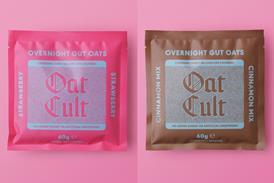




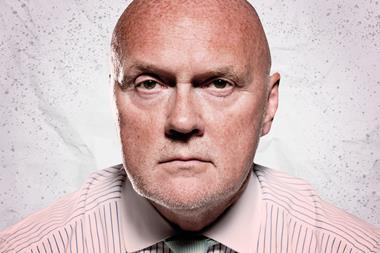
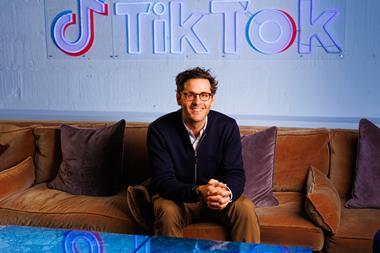


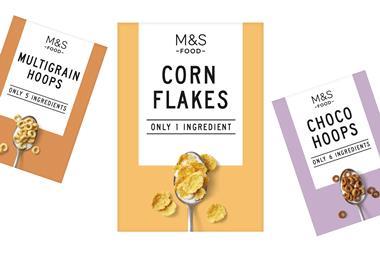
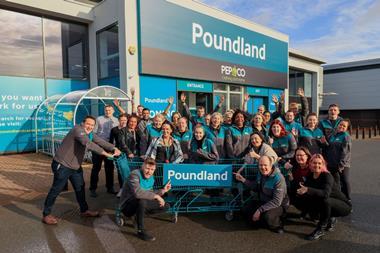
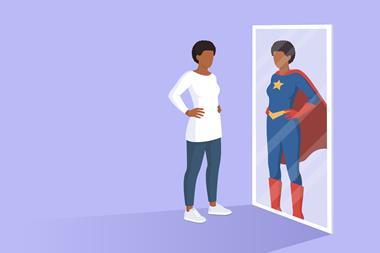

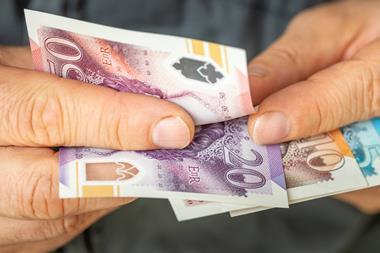

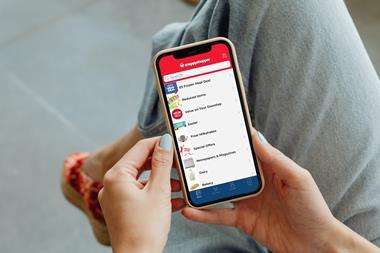
No comments yet